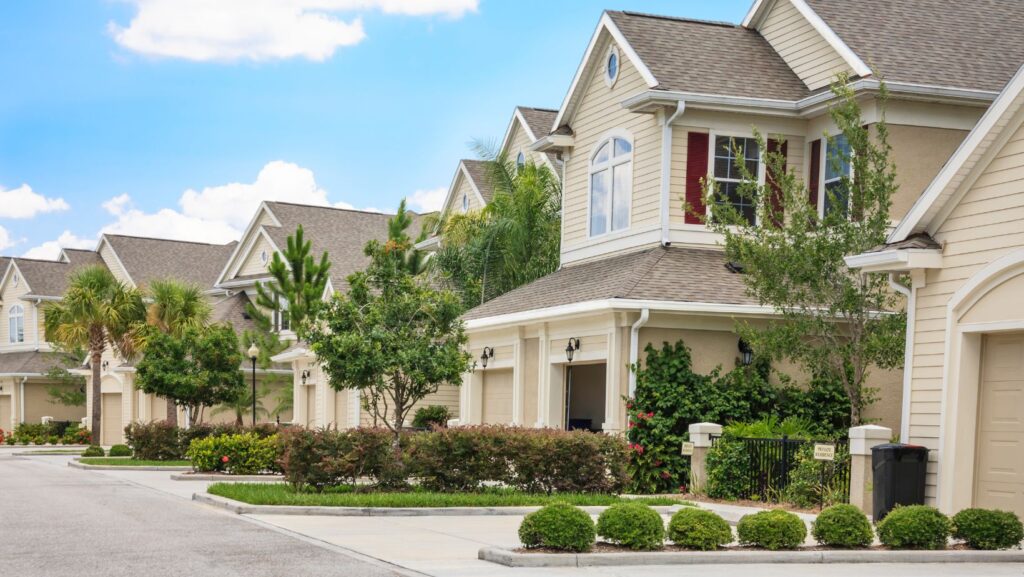You wouldn’t propose after just one date, so why would you commit to a 30-year mortgage in a neighborhood you barely know? It’s an easy trap to fall into. You get captivated by the granite countertops, the perfect backyard, or the spacious primary suite and push the most critical factor to the side: the community where you’ll actually live your life.
The truth is, while you live in a house, you live in a neighborhood. It’s the backdrop for your daily routine, your weekend adventures, and your long-term happiness. This guide provides a systematic, actionable framework to properly “date” a neighborhood. It will help you move beyond the listing photos and ensure you find a perfect long-term match for both your lifestyle and your investment.
Key Takeaways
- Thorough neighborhood research is as crucial as a home inspection for long-term satisfaction and property value.
- Combine online “pre-dating” (data analysis, digital community insights) with real-world “first dates” (in-person visits at different times of day and week).
- Engage with current residents to gain invaluable qualitative insights that data and observation alone can’t provide.
- Use a systematic comparison method, like a scorecard, to confidently choose the neighborhood that truly aligns with your lifestyle and aspirations.
Why You Need to Look Beyond the Curb Appeal
The perfect house in the wrong neighborhood can quickly become a source of regret. As noted by Forbes, the neighborhood you choose profoundly shapes your daily life—your commute, access to amenities, social opportunities, and overall sense of well-being and safety. In many ways, it is the invisible architecture of your happiness. (Forbes)
As highlighted by Investopedia, the right neighborhood is not just about personal comfort; it’s a strategic financial asset. “Factors such as proximity to transport links, high-ranked schools, and community involvement significantly affect property value due to supply and demand dynamics. A great, well-maintained community can enhance your investment, while a declining one can hinder it.”
A truly insightful neighborhood guide moves beyond simple stats to paint a vivid picture of daily life, capturing the area’s unique character, community, and soul. To see exactly what this looks like in practice, explore Washington Park homes for sale, where you can find detailed listings, property highlights, and insights into local amenities that help prospective buyers envision life in the neighborhood. This perspective ensures you not only understand the market but also how each home fits into the lifestyle and community you aspire to join.
Phase 1: The Pre-Date — Your Digital Investigation
Before you spend hours driving around, you need to do your homework. Think of this as the essential online background check—a way to gather objective facts and efficiently filter out neighborhoods that are clear non-starters. The goal here is to use data to narrow your focus to a few strong contenders.
Assess Safety and Crime Data
Safety is a top priority for nearly every homebuyer. Start by getting a clear, data-driven picture of the area. Look beyond raw numbers to understand the types of crimes reported (e.g., property crime vs. violent crime) and, more importantly, the trends over time. Is crime increasing, decreasing, or stable?
To get started, there are a number of online resources that make it easy to find out local crime statistics.
Evaluate the School District
Even if you don’t have children, the quality of the local school district has a major impact on property values and the overall stability of a neighborhood. Use reputable sites like GreatSchools.org or Niche.com as a starting point for your research.
Don’t stop at the test scores. Dig deeper into parent reviews, teacher-to-student ratios, extracurricular programs, and special education offerings. If a specific school is a top priority, always double-check the official school district maps to verify attendance boundaries for any address you’re considering.
Map Out Your Daily Life
A five-mile commute can feel very different depending on traffic. Use tools like Google Maps to check your potential commute time during peak rush hour, both in the morning and evening. As one expert source wisely advises, “just because the distance is shorter in mileage does not necessarily mean it will take less time with traffic and construction.”
Expand this exercise to map out your entire routine. How long will it take to get to your go-to grocery store, your gym, the doctor’s office, or the homes of family and friends? Visualizing these daily and weekly trips will give you a realistic sense of the neighborhood’s convenience.
Join the Digital Community
To get a feel for the real-time pulse of a neighborhood, go where the residents are. Search on Facebook for neighborhood-specific groups or check out the area on Nextdoor. Lurk for a week or two and observe the conversations.
What are the common topics? Are people organizing community clean-ups and block parties, or is the feed filled with complaints about package theft and loose dogs? The tone and topics of these digital forums offer unfiltered clues about the community’s vibe and its current challenges.
Phase 2: The First Dates — In-Person Exploration

Online data can tell you a lot, but it can’t tell you everything. Nothing replaces the firsthand experience of walking the streets and soaking in the atmosphere. This is where you test your digital research against reality. The key is to visit multiple times on different days and at different hours to see the neighborhood’s full personality.
The Daytime Drive-and-Walk
Schedule your first visit for a weekday morning or afternoon. Park your car and walk around. This is your chance to look for signs of pride of ownership—are lawns well-maintained, are homes in good repair, and are the streets clean?
Observe the lifestyle indicators. Do you see people out walking their dogs, jogging, or pushing strollers? Are kids playing in their yards or at local parks? The level of daytime activity can tell you a lot about the community’s character. Pay close attention to walkability, as “neighborhoods with higher walkability scores tend to have higher property values and greater resident satisfaction.”
Also, take note of the green spaces. As a housing expert notes, “access to outdoor spaces enhances wellbeing for everyone, providing places for exercise, play, stress relief, and connecting with neighbors.” Are the local parks inviting and well-used?
The Evening & Weekend Vibe Check
A neighborhood can completely transform after 5 PM and on the weekends. Revisit in the evening and again on a Saturday or Sunday. Is it quiet and calm, or does it come alive with activity?
Listen carefully. Can you hear highway traffic, a nearby train, or noise from local bars and restaurants? How is the street parking situation when everyone is home from work? Pay attention to the general sense of safety. Are the streets well-lit? Do you see people out for an evening stroll? This “vibe check” will help you understand if the neighborhood’s energy level matches your own.
Phase 3: Meeting the Locals
The ultimate experts on a neighborhood are the people who live there every day. Gathering their insights is the final, crucial step in your research. A brief, friendly conversation can reveal more than hours of online searching.
How to Talk to Potential Neighbors
You don’t need to knock on doors. Look for natural opportunities to strike up a conversation in a low-pressure way. Visit a local coffee shop, spend time at a neighborhood park, or take a walk when you see people out doing yard work.
Be friendly, open, and respectful of their time. A simple opening like, “Hi, we’re thinking about moving to this area and just love how beautiful it is. Do you mind if I ask you what it’s like to live here?” is often all it takes.
Key Questions to Ask
To get the most valuable information, ask open-ended questions that go beyond a simple “yes” or “no.” Here are a few powerful ones to get you started:
- “What do you love most about living here?” This reveals the neighborhood’s core appeal and what residents value most.
- “Is there anything you wish you’d known before you moved in?” This is a polite way to uncover common frustrations or surprises.
- “How is the community during different seasons or holidays?” This can give you a sense of local traditions and how the vibe changes throughout the year.
- “What’s the internet service like here?” Don’t forget the practical stuff! In today’s world, reliable connectivity is a must.
- “Are there active community associations or events?” This helps gauge the level of community engagement and neighborliness.
Knowing the Red Flags: When to Walk Away
Just as in dating, it’s important to recognize potential deal-breakers early. Keep an eye out for these warning signs that might indicate a neighborhood isn’t the right fit or could have future problems:
- A high number of “For Sale” or “For Rent” signs: This can suggest instability or resident dissatisfaction.
- Visible neglect: Deferred maintenance on multiple homes, overgrown public spaces, or excessive litter can be signs of a declining area.
- Pervasive security measures: If nearly every home has prominent bars on the windows or multiple security cameras, it may indicate underlying safety concerns.
- Consistently negative online sentiment: Every neighborhood has complainers, but a constant stream of unresolved issues in online forums is a red flag.
- Signs of blight or disruptive development: Be wary of spreading blight, abandoned properties, or major construction projects with no clear endpoint.
Making the Commitment: How to Compare and Decide
After completing your three-phase “dating” process—digital investigation, in-person exploration, and talking to locals—it’s time to make a decision. The best way to do this is to get organized and compare your top contenders objectively.
Create a simple scorecard or checklist based on what matters most to you. List your personal “must-haves” (e.g., commute under 30 minutes, highly-rated elementary school) and “nice-to-haves” (e.g., walkability to a coffee shop, a nearby park). Rate your top two or three neighborhood choices against each criterion. This simple exercise will help you visualize the pros and cons and make your final choice with clarity and confidence.
Conclusion
Choosing a neighborhood is one of the biggest decisions you’ll ever make. By moving beyond the house itself and taking the time to “date” the community, you transform the home-buying process from a stressful gamble into a strategic investment in your future happiness.
Remember, a house is just a structure; the neighborhood is where your life unfolds. By following these steps, you’ll move beyond simply finding a house to discovering a place where you can genuinely find inspiration for your next home, settle in, and thrive.



